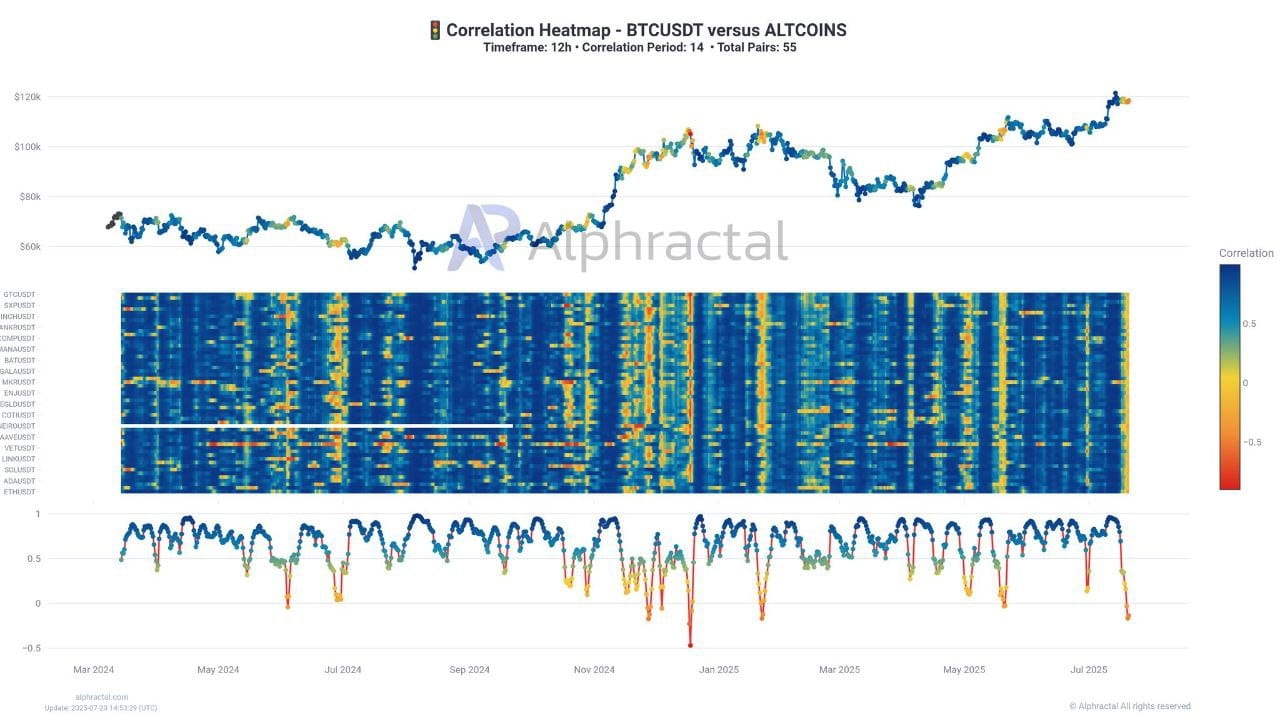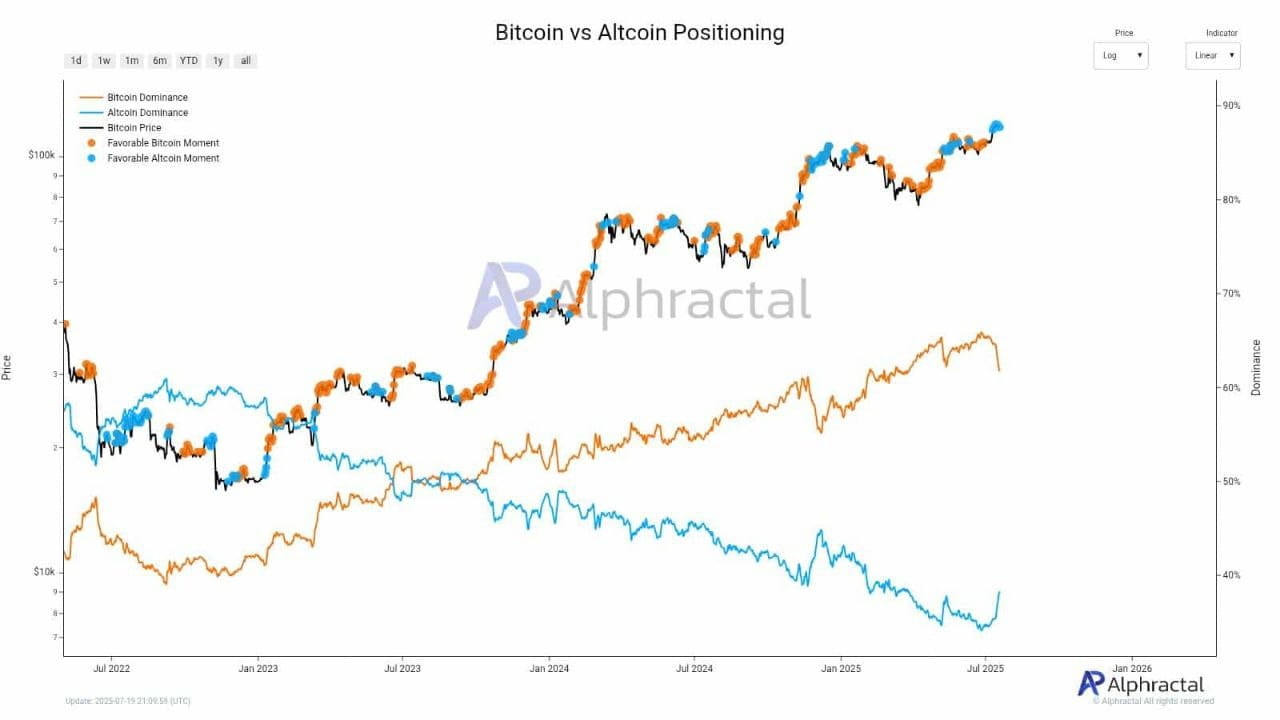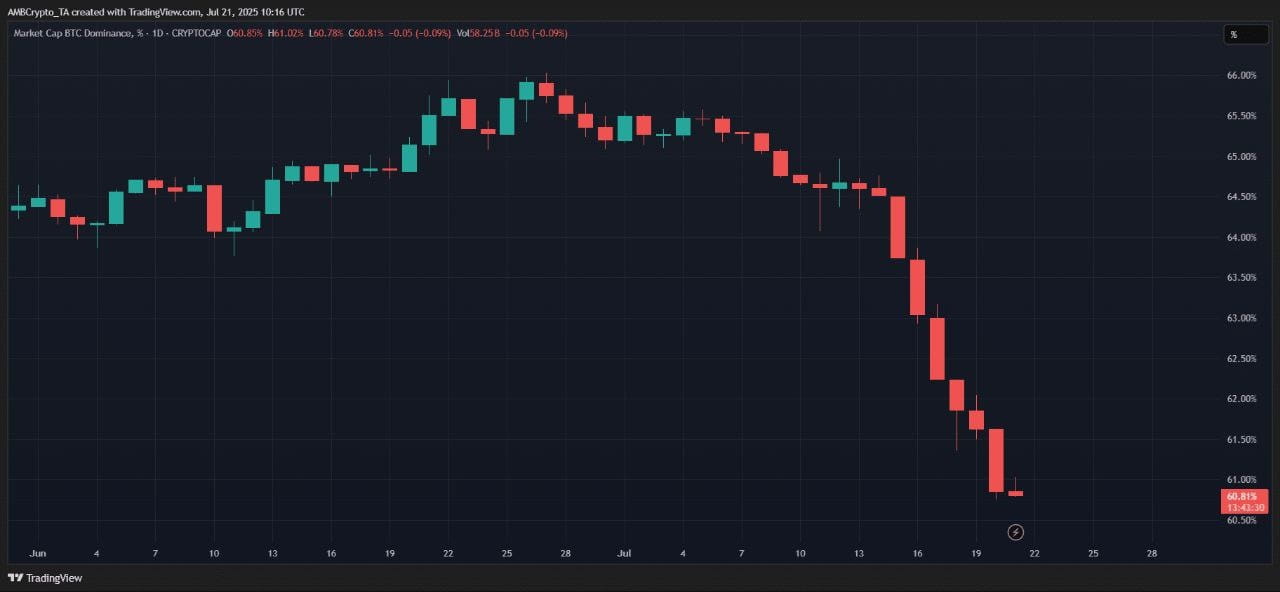Recently, altcoins have grown faster than Bitcoin (BTC), but the widening gap between their price volatility could be a warning sign.
When this separation has occurred in the past, it often leads to strong market volatility and abrupt liquidations, especially for traders using excessive leverage.
Altcoin escapes the grip of Bitcoin
The correlation chart shows a significant change: altcoins are increasingly moving independently of Bitcoin.
In the past week, the average 14-period correlation has dropped sharply; some altcoins have even moved into negative territory.
This indicates that their prices are no longer trending with Bitcoin, signifying a clear separation in the market. This behavior is often accompanied by chaotic volatility.

When the correlation breaks down, liquidity becomes fragmented and volatility spikes; often leading to sudden liquidations on both sides. Overall, the uptrend of altcoins may not be as stable as it appears.
Reversal momentum
Momentum is currently leaning towards altcoins over Bitcoin. Data from Alphractal shows continuous growth moments of altcoins (green dots) in recent weeks, as Bitcoin's dominance ratio (orange line) begins to weaken.

Capital rotation into altcoins often occurs near market tops or when traders seek alternative investments during periods of slow Bitcoin movement.
Although altcoins offer greater growth potential, they come with higher risks; and without strong support from BTC, those risks will increase.
BTC.D plummets
Bitcoin's dominance ratio (BTC.D) has slid from over 66% at the beginning of July to just over 60%; the largest drop in over a year. Such volatility rarely occurs in isolation.
This is a sign of capital rotation into altcoins, often marking strong speculative phases in the market. However, it also drains Bitcoin's liquidity, making it more vulnerable to price shocks.

A sharp decline in BTC.D without corresponding capital inflow usually means traders are moving to high beta altcoins.
If the market reverses, that position could be heavily impacted. The decrease in the current dominance ratio is a warning sign for those ignoring downside risks.